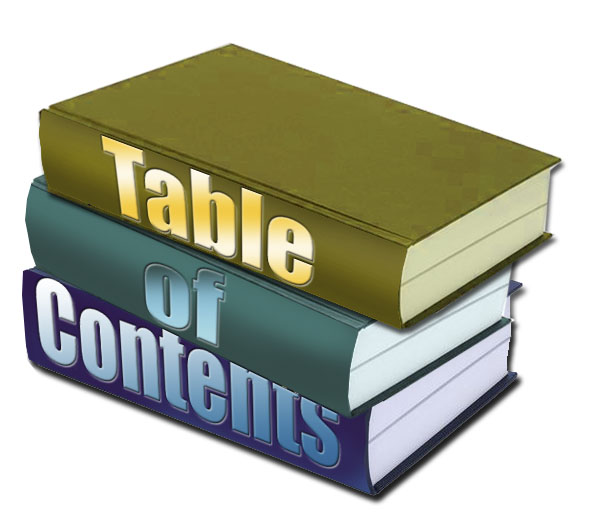
For those with long documents that require a table of contents, such as a thesis or dissertation, this could be very useful information for you.
The easiest way to create a table of contents in Word is to use the built-in heading styles. You can also create a table of contents that is based on the custom styles that you have applied. Or you can assign the table of contents levels to individual text entries.
Mark entries by using built-in heading styles
1. Select the text that you want to appear in the table of contents.
2. On the "Home" tab, in the "Styles" group, click the style that you want.
NOTE:
• If you do not see the style that you want, click the arrow to expand the "Quick Style" gallery.
• If the style that you want does not appear in the Quick Style gallery, press CTRL+SHIFT+S to open the "Apply Styles" task pane. Under "Style Name," click the style that you want.
Create a table of contents from the gallery
After you mark the entries for your table of contents, you are ready to build it.
1. Click where you want to insert the table of contents, usually at the beginning of a document.
2. On the "References" tab, in the "Table of Contents" group, click "Table of Contents," and then click the table of contents style that you want.
NOTE:
• If you want to specify more options — for example, how many heading levels to show — click "Insert Table of Contents" to open the "Table of Contents" dialog box.
Create a custom table of contents
1. On the "References" tab, in the "Table of Contents" group, click "Table of Contents," and then click "Insert Table of Contents."
2. In the "Table of Contents" dialog box, do any of the following:
• To change how many heading levels are displayed in the table of contents, enter the number that you want in the box next to Show levels, under General.
• To change the overall look of your table of contents, click a different format in the Formats list. You can see what your choice looks like in the Print Preview and Web Preview areas.
• To change the type of line that appears between the entry text and the page number, click an option in the Tab leader list.
• To change the way heading levels are displayed in the table of contents, click Modify. In the Style dialog box, click the level that you want to change, and then click Modify. In the Modify Style dialog box, you can change the font, the size, and the amount of indentation.
3. To use custom styles in the table of contents, click "Options," and then do the following:
a. Under "Available styles," find the style that you applied to the headings in your document.
b. Under "TOC level," next to the style name, type a number from 1 to 9 to indicate the level that you want the heading style to represent.
c. Repeat step 1 and step 2 for each heading style that you want to include in the table of contents.
d. Click OK.
NOTE: If you want to use only custom styles, delete the TOC level numbers for the built-in styles, such as Heading 1.
4. Choose a table of contents to fit the document type:
• Printed document: If you are creating a document that readers will read on a printed page, create a table of contents in which each entry lists both the heading and the page number where the heading appears. Readers can turn to the page that they want.
• Online document: For a document that readers will read online in Word, you can format the entries in the table of contents as hyperlinks, so that readers can go to a heading by clicking its entry in the table of contents.
These instructions, along with illustrations, can also be found in SharePoint > Software Users Group > Shared Documents > Word5 > Creating a Table of Contents Automatically.
NOTE: This information was original taken from http://office.microsoft.com/en-us/word-help/create-a-table-of-contents-or-update-a-table-of-contents-HP010368778.aspx.